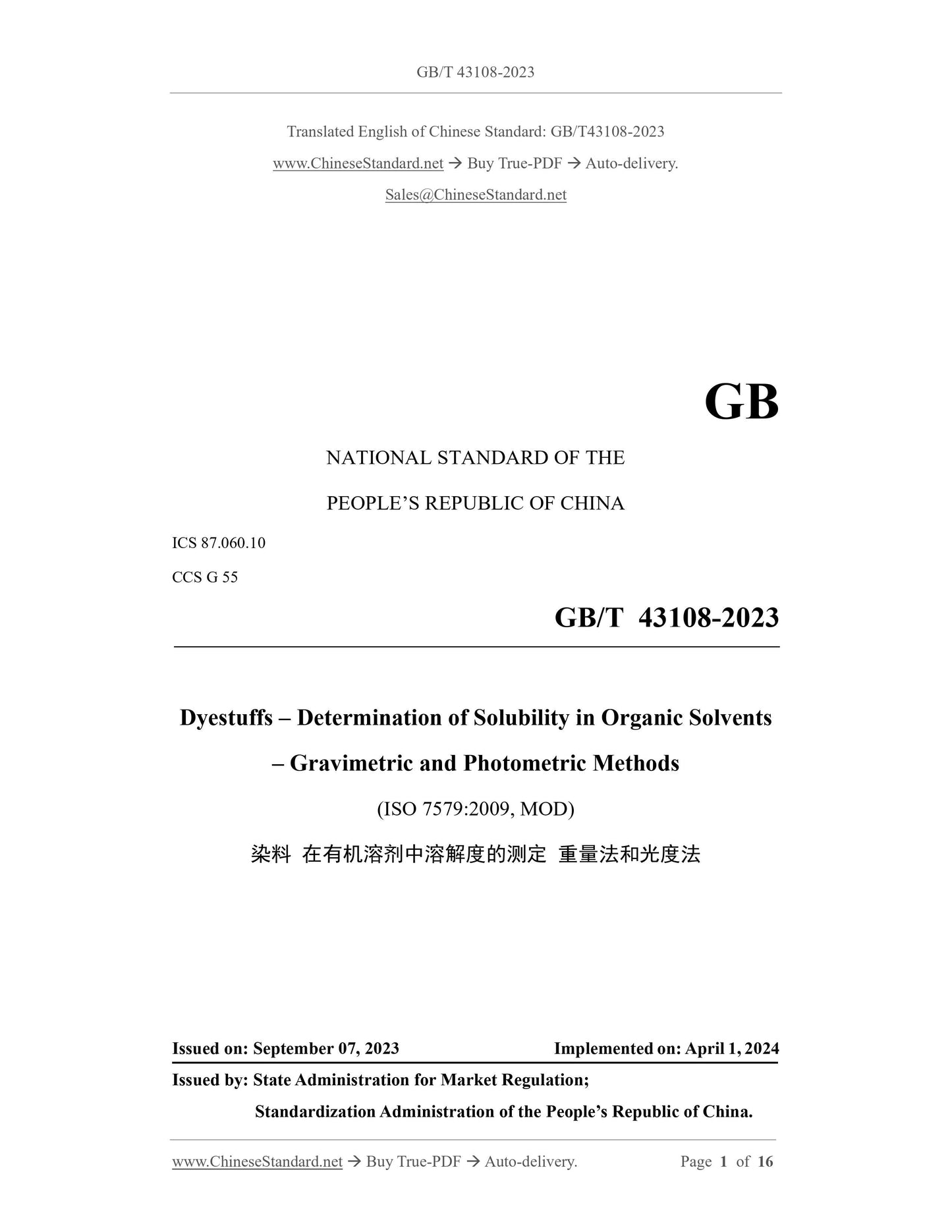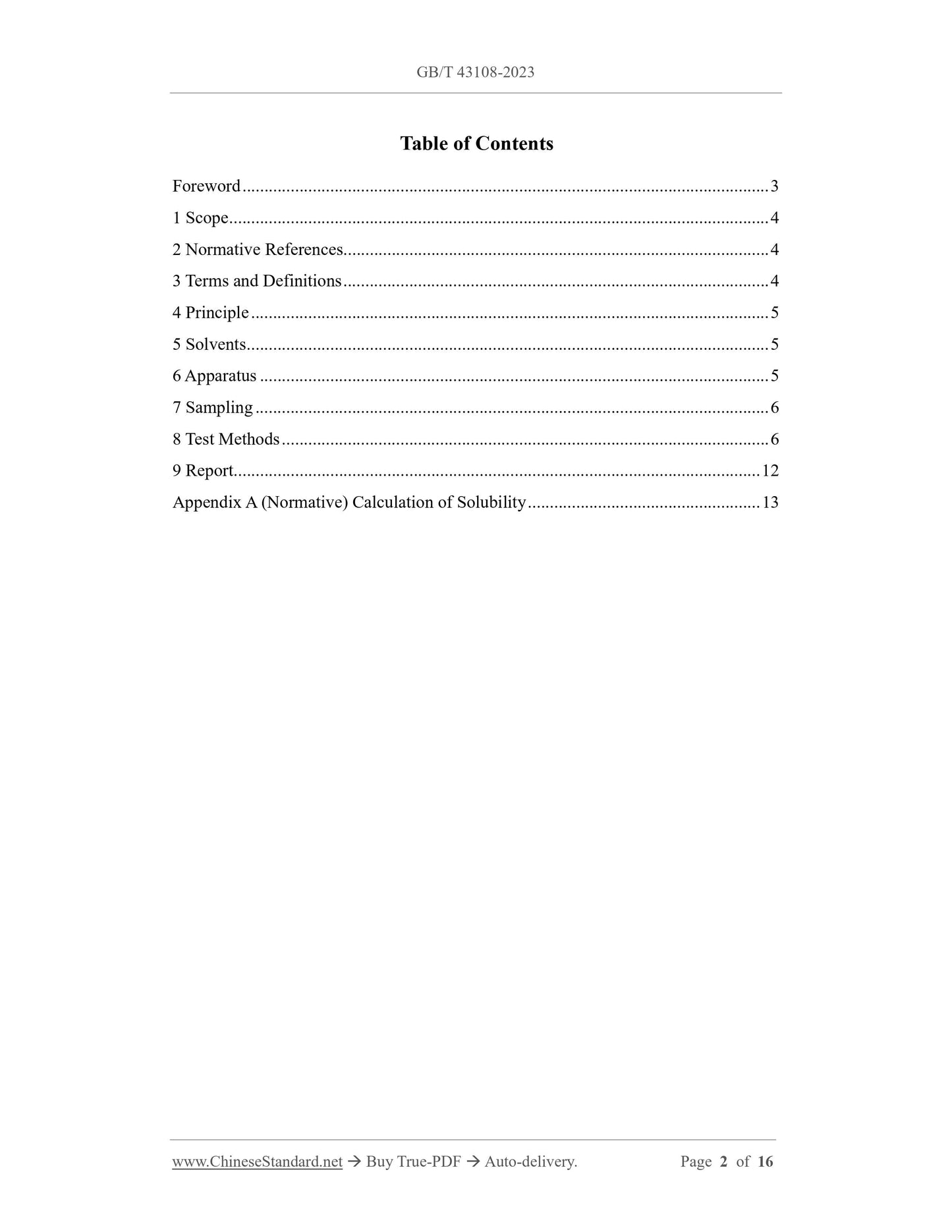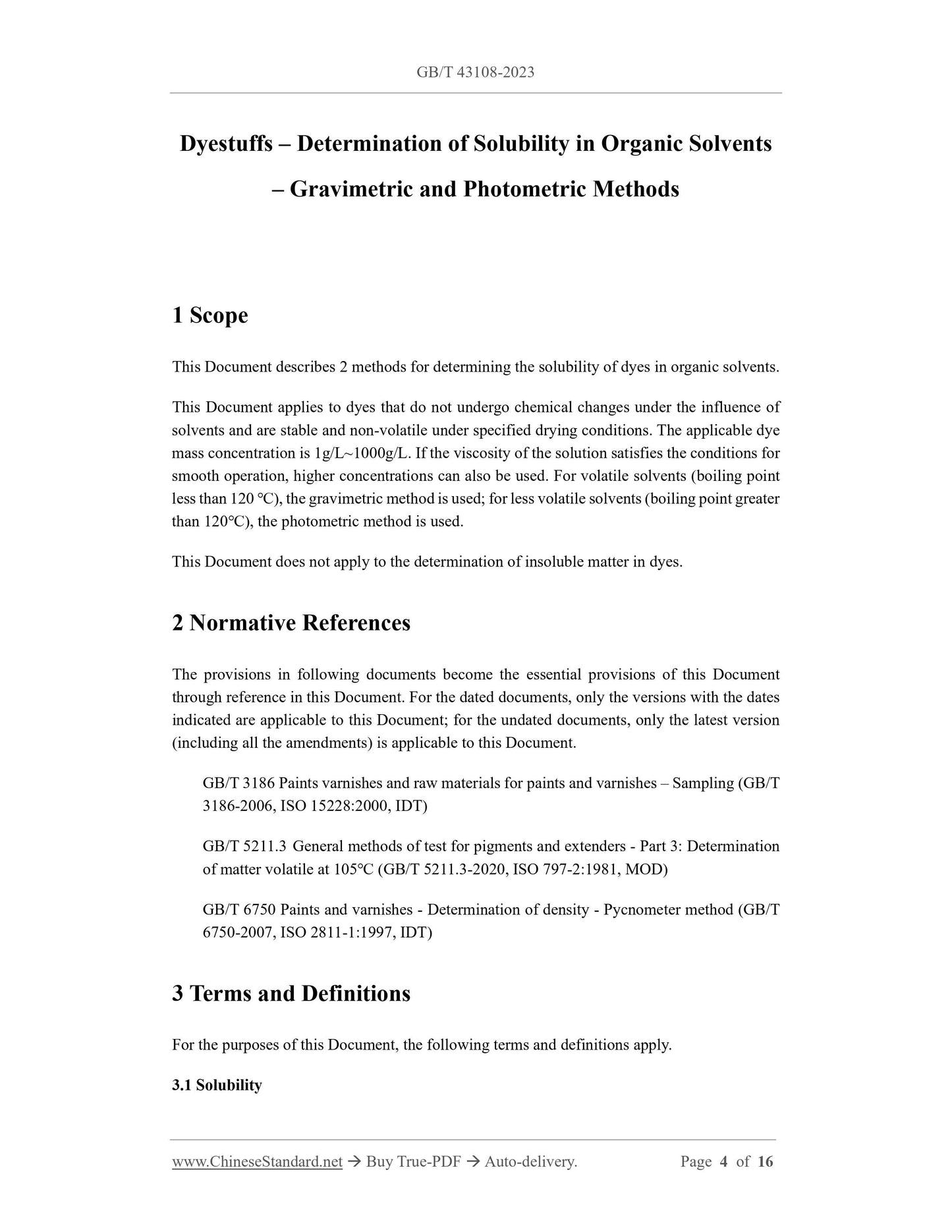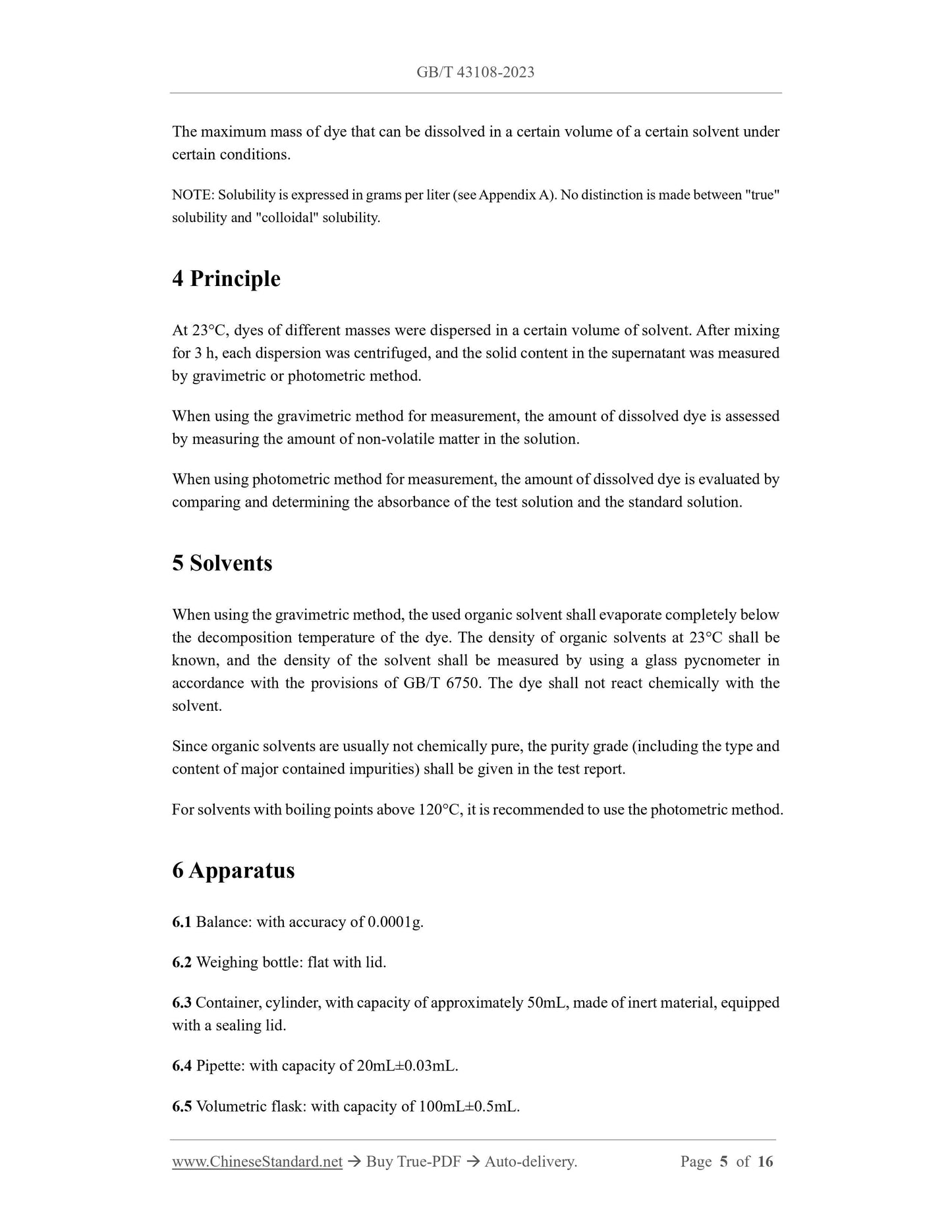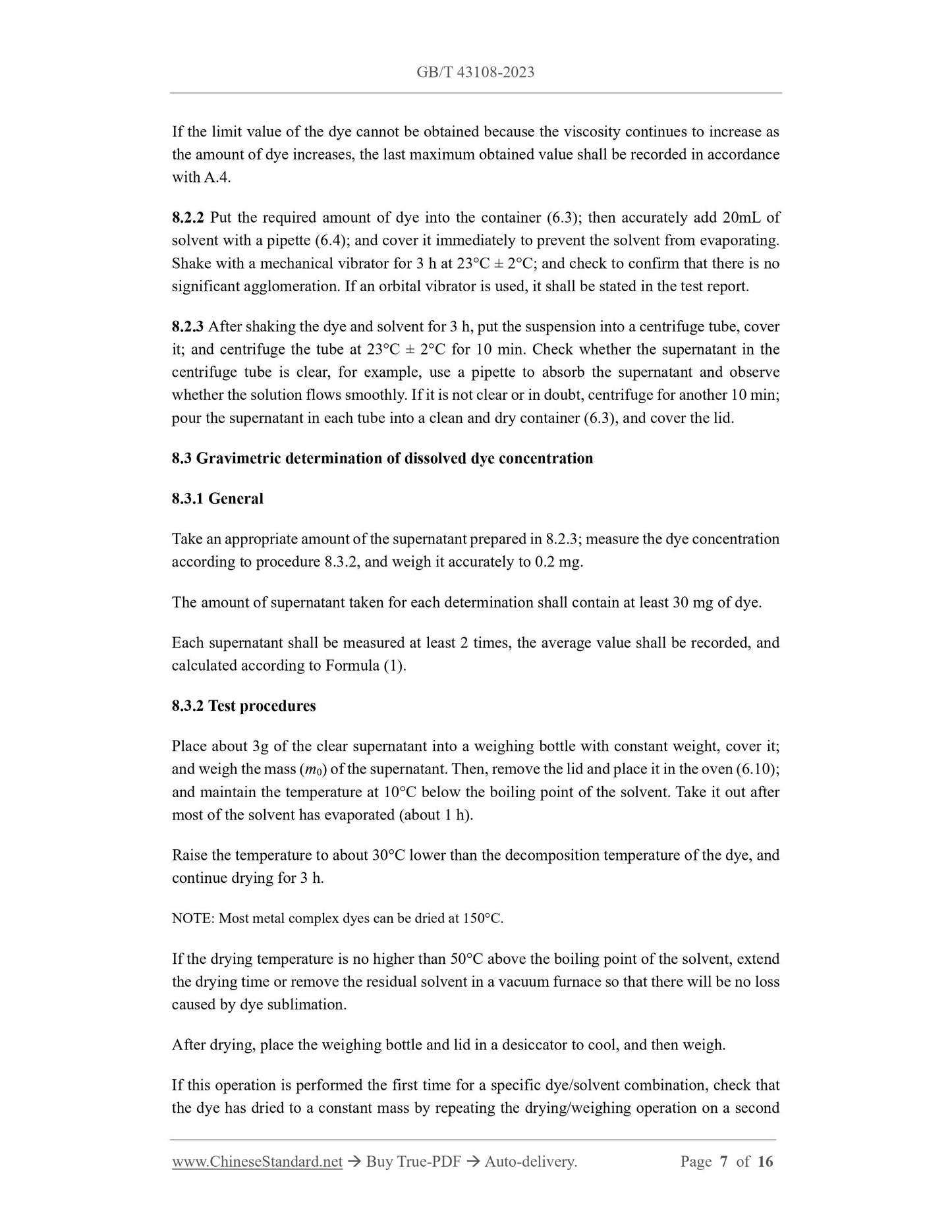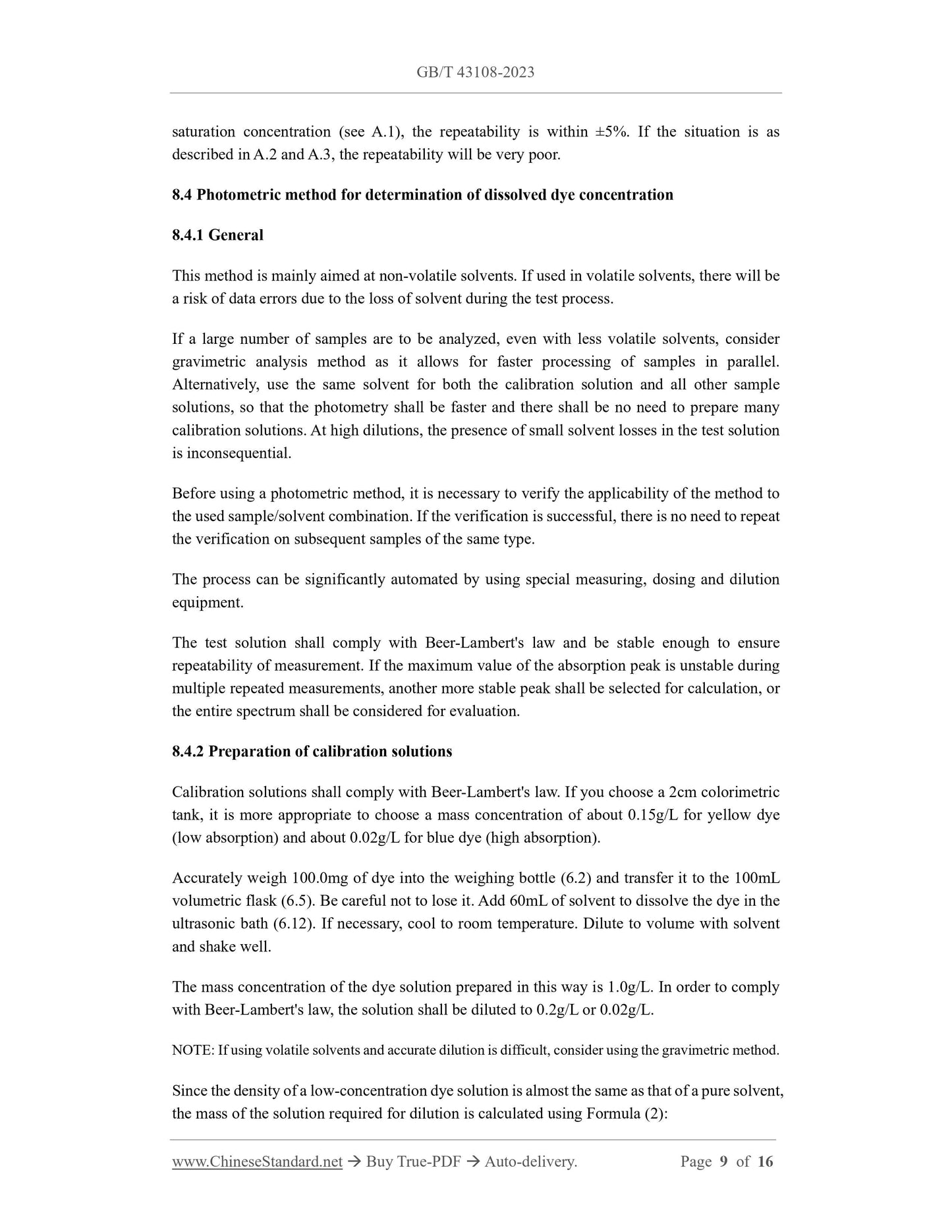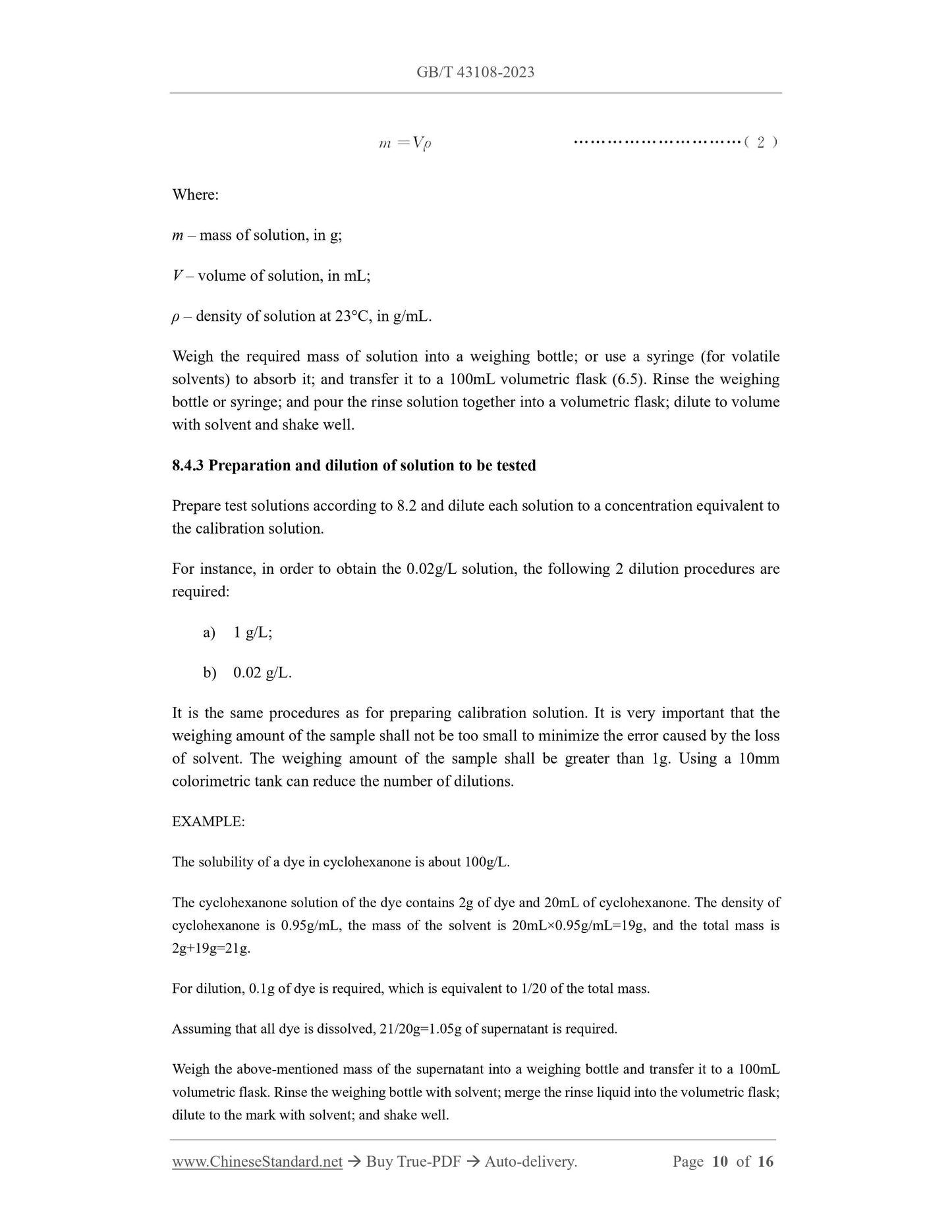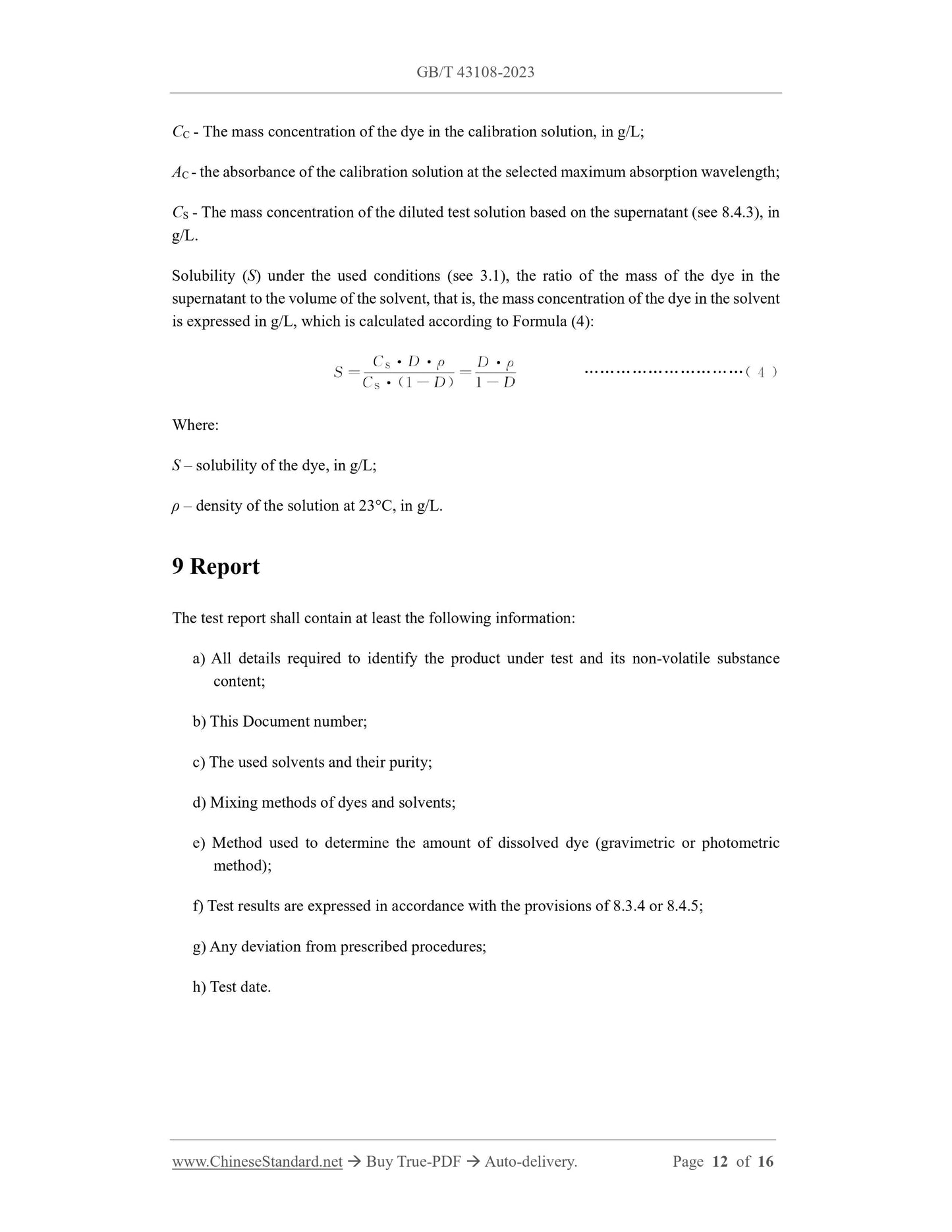1
/
of
8
www.ChineseStandard.us -- Field Test Asia Pte. Ltd.
GB/T 43108-2023 English PDF (GB/T43108-2023)
GB/T 43108-2023 English PDF (GB/T43108-2023)
Regular price
$245.00
Regular price
Sale price
$245.00
Unit price
/
per
Shipping calculated at checkout.
Couldn't load pickup availability
GB/T 43108-2023: Dyestuffs - Determination of solubility in organic solvents - Gravimetric and photometric methods
Delivery: 9 seconds. Download (and Email) true-PDF + Invoice.Get Quotation: Click GB/T 43108-2023 (Self-service in 1-minute)
Newer / historical versions: GB/T 43108-2023
Preview True-PDF
Scope
This Document describes 2 methods for determining the solubility of dyes in organic solvents.This Document applies to dyes that do not undergo chemical changes under the influence of
solvents and are stable and non-volatile under specified drying conditions. The applicable dye
mass concentration is 1g/L~1000g/L. If the viscosity of the solution satisfies the conditions for
smooth operation, higher concentrations can also be used. For volatile solvents (boiling point
less than 120 ℃), the gravimetric method is used; for less volatile solvents (boiling point greater
than 120℃), the photometric method is used.
This Document does not apply to the determination of insoluble matter in dyes.
Basic Data
| Standard ID | GB/T 43108-2023 (GB/T43108-2023) |
| Description (Translated English) | Dyestuffs - Determination of solubility in organic solvents - Gravimetric and photometric methods |
| Sector / Industry | National Standard (Recommended) |
| Classification of Chinese Standard | G55 |
| Classification of International Standard | 87.060.10 |
| Word Count Estimation | 14,161 |
| Date of Issue | 2023-09-07 |
| Date of Implementation | 2024-04-01 |
| Issuing agency(ies) | State Administration for Market Regulation, China National Standardization Administration |
Share
